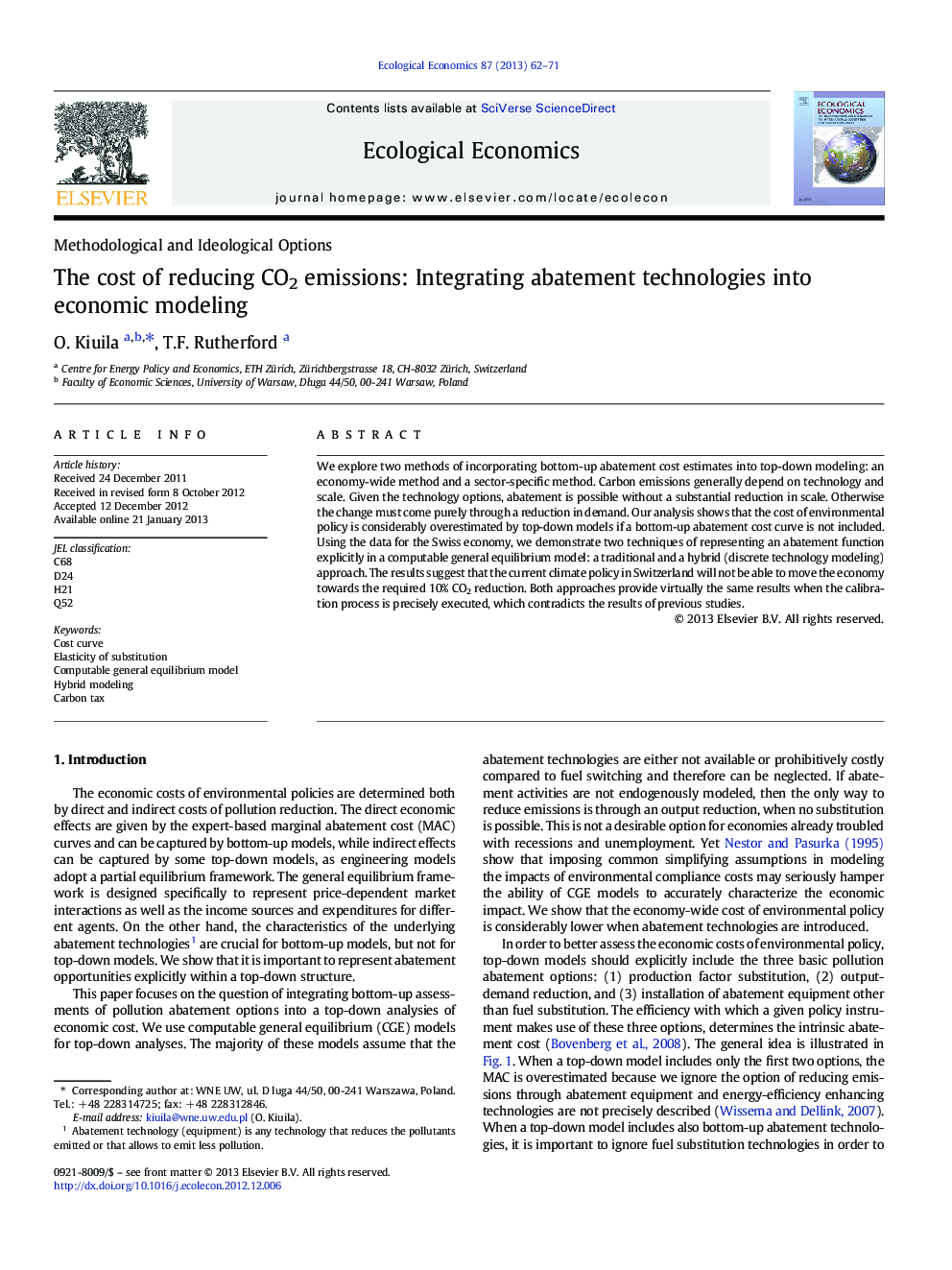| کد مقاله | کد نشریه | سال انتشار | مقاله انگلیسی | نسخه تمام متن |
|---|---|---|---|---|
| 5050006 | 1476392 | 2013 | 10 صفحه PDF | دانلود رایگان |

We explore two methods of incorporating bottom-up abatement cost estimates into top-down modeling: an economy-wide method and a sector-specific method. Carbon emissions generally depend on technology and scale. Given the technology options, abatement is possible without a substantial reduction in scale. Otherwise the change must come purely through a reduction in demand. Our analysis shows that the cost of environmental policy is considerably overestimated by top-down models if a bottom-up abatement cost curve is not included. Using the data for the Swiss economy, we demonstrate two techniques of representing an abatement function explicitly in a computable general equilibrium model: a traditional and a hybrid (discrete technology modeling) approach. The results suggest that the current climate policy in Switzerland will not be able to move the economy towards the required 10% CO2 reduction. Both approaches provide virtually the same results when the calibration process is precisely executed, which contradicts the results of previous studies.
⺠The previous analysis of national climate policies shows the upper bound of costs. ⺠We integrate abatement technologies with top-down modeling. ⺠The hybrid and the traditional CGE modeling provide similar results. ⺠Large number of technological options to abate does not make the hybrid approach useless.
Journal: Ecological Economics - Volume 87, March 2013, Pages 62-71